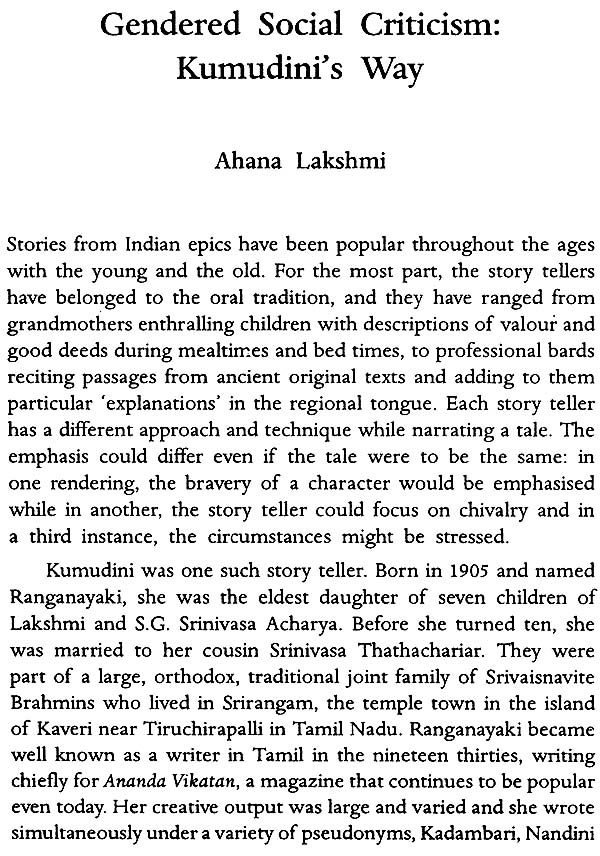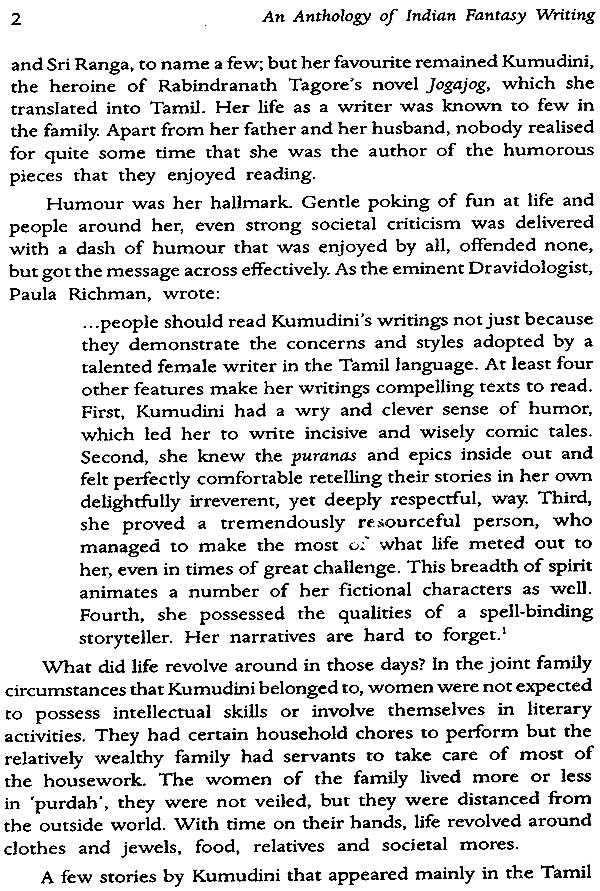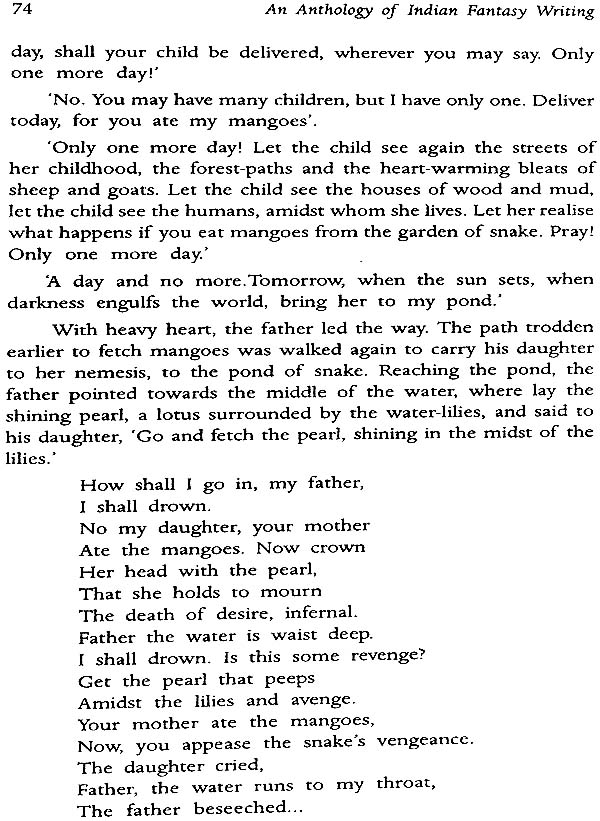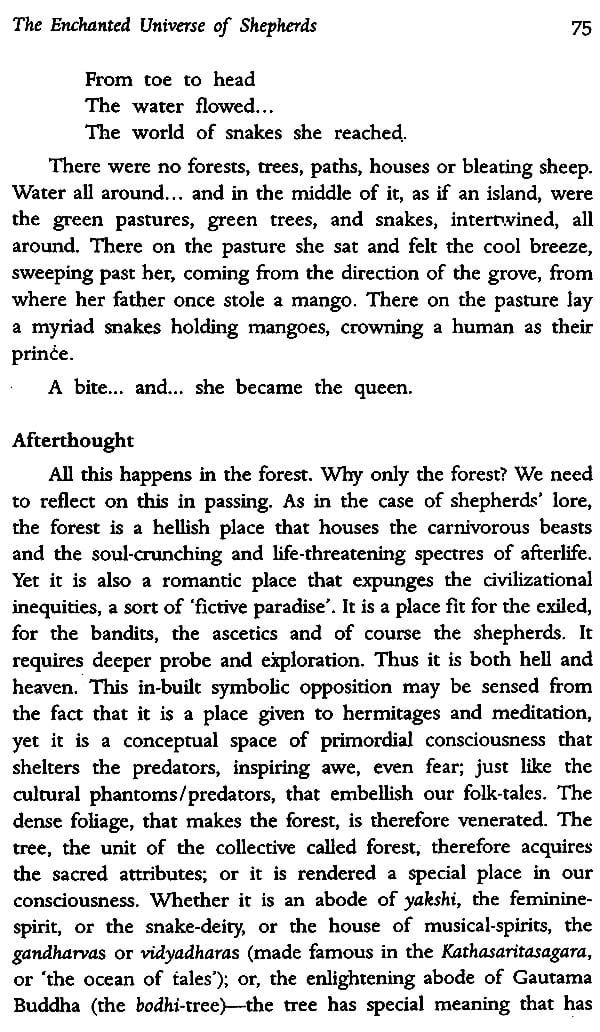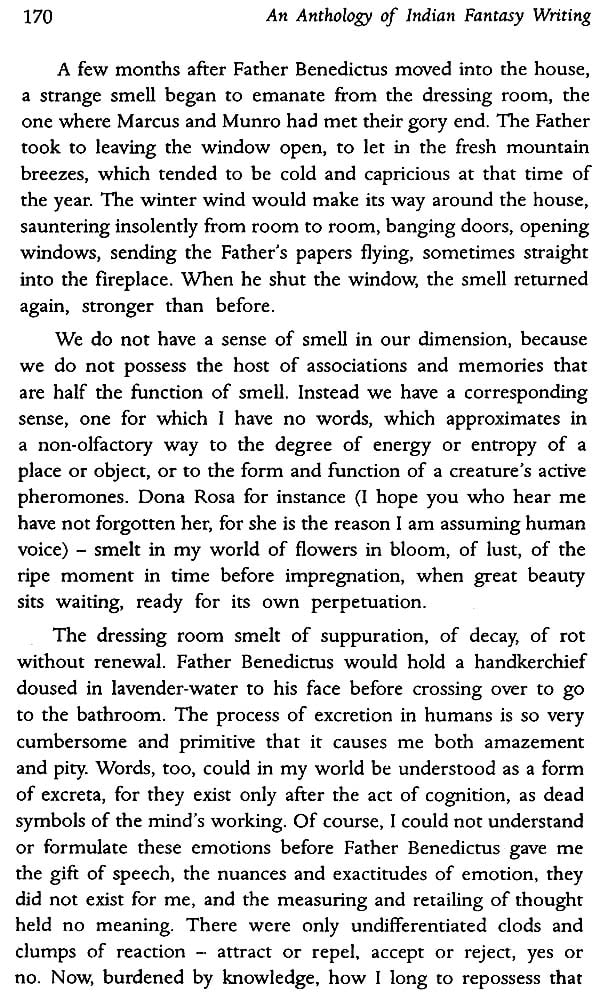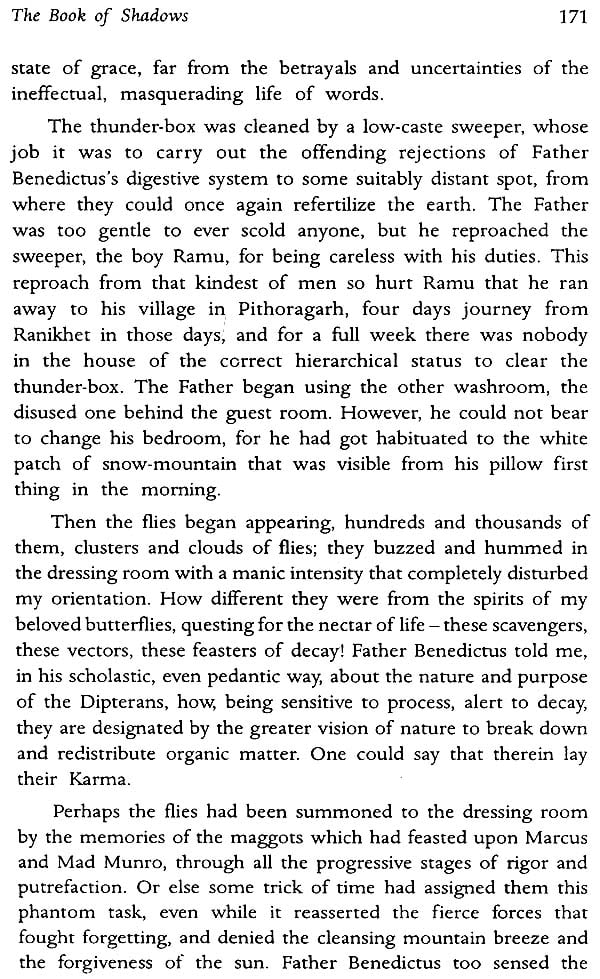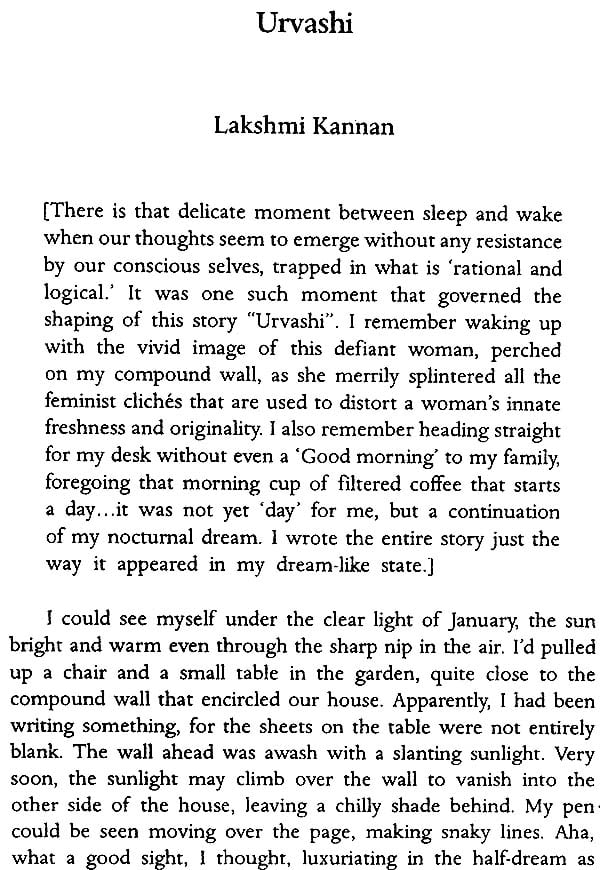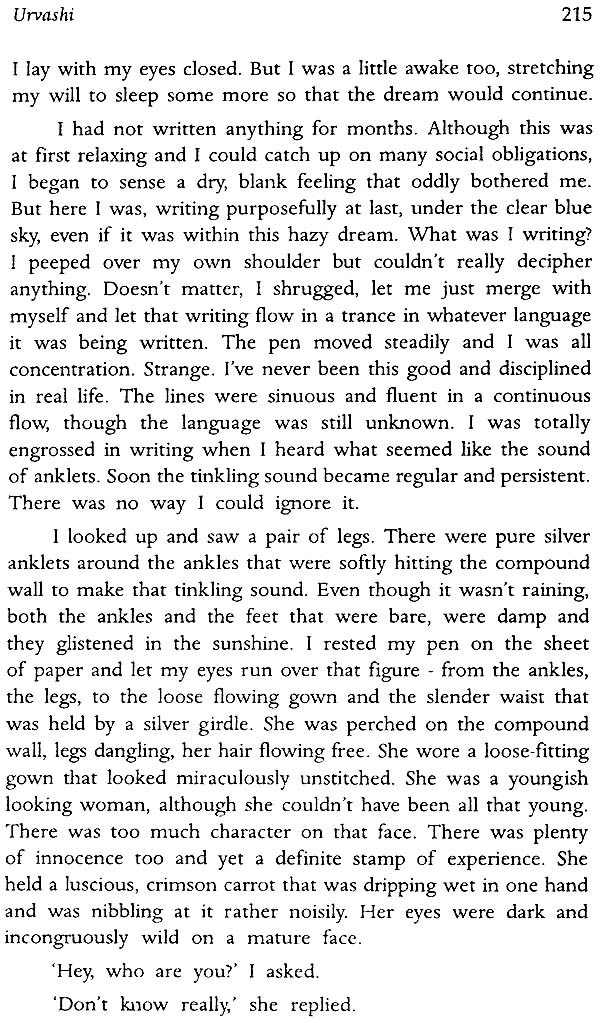
An Anthology of Indian Fantasy Writing
Book Specification
| Item Code: | NAP576 |
| Author: | Malashri Lal and Deepa Agarwal |
| Publisher: | Sahitya Akademi, Delhi |
| Language: | English |
| Edition: | 2017 |
| ISBN: | 9788126050987 |
| Pages: | 272 |
| Cover: | Paperback |
| Other Details | 8.5 inch X 5.5 inch |
| Weight | 370 gm |
Book Description
About the Book
Among the many forms taken by the imaginary in literature. the use of fantasy and the marvellous has stretched the creative potential to the furthest reaches of the impossible Indian literature from the ancients times has been inclined to well in the magical domains where the logic of reason is questioned by the alternate logic of a differently ordered world : where gods and men cavort. Where beasts talks and where humans take preternatural shapes. And ‘’other life forms ‘’ commingle.
Anthology of Indian fantasy writing. The first of kinds to address Indian Literature in the genre .draws attentions to the fact that marvellous is often the agency for carrying entertainment as well as social message. Conservative as well as radical polities stereotyping as well as social message .conservative as well as radical polities stereotyping as well as its ironic deflations. From the Ramayana and Mahabharata to the epic of Husain. From the Buddhist jataka tales to devkinandan Khatri’s chandrakanta. There are parallels and contrasts that are evident as well as critical writing on fantasy. Will appeal to general readers well as the university community.
Malashri Lal is professor of English at the University of Delhi. And convener of the sahitya Akademi’s English akademi’s English Advisory boards. Her specializations are in women and gender studies which she has fourteen books including the law of the thresholds: women writers in Indian English. In search of Sita: revisiting of mythology and Tagore and the feminine; A journey through Translations as a recipients of international fellowships she has conducted research in prestigious institutions Harvard university U.S.A she served as jury member on several book committees.
Deepa Agarwal is an author, poet and translator . she received the N.C.E.R.T National award for children’s Literature in 1993 for her picture book Ashok’s New Friends , and her historical fietion Caravan to Tibet was on the IBBY(International board on books for young people )Honour list 2003 . Her translations of chandrakanta (Puffin Classies). Devakinandan khatri’s class hindi novel . gained much popularity and acclaim . She alsoauthored Chanakya the master of statee raft (penguin India) in the puffin lives series.
Fantasy is an integral part of the literary imagination in India, yet surprisingly, no theoretical analysis of the genre or its several manifestations has been attempted. Perhaps one may claim that the elements of fantasy are so widely dispersed in literary history that a nebulous and undifferentiated acceptance of its being is more comfortable than any attempt at intellectual formulation. Nevertheless, the present anthology of essays and creative writing emerged from a conscious effort to understand the expressions of fantasy and explore the possibility of literary formulation. As a first book in this direction, we hope it will be accepted for its honest endeavour and the window it opens to a relatively less analysed framework in Indian literature.
The Issue
Between the sceptic and the believer appear some attempts to comprehend the fantastic. In his lecture entitled "Thoughts on the Gita", Swami Vivekananda registers his bafflement at the supernatural and fantastic elements in Hindu mythology as follows:
In ancient times they had no knowledge whatever of geography; imagination ran riot. And so we meet with such fantastic creations of the brain as sweet-ocean, milk-ocean, clarified-butter-ocean, curd-ocean, etc! In the Puranas, we find one living ten thousand years, another a hundred thousand years! But the Vedas say, 7-d17181 — "Man lives a hundred years." Whom shall we follow here?
The religious and literary traditions of Hinduism date from ancient times and the fantastical forms its generic base. The point is that fantasy dissolves the difference between one representation and another. It is easy to surmise that the fantastic element in Hindu myths have diverse implications and multiple layers of meaning, depending on the reader's subjectivity. They range from didactic to documentary, from psychoanalytic to ritual and overlapping interpretations are encouraged rather than cast aside. As Devdutt Pattanaik says, "Hindus have one God. They also have 330 million gods: male gods, female gods, personal gods, family gods, household gods, village gods, gods of space and time, gods for specific castes and particular professions, gods who reside in trees, in animals, in minerals, in geometrical patterns and in man-made objects. Then there are a whole host of demons. But no Devil." (Devdutt Pattanaik, Myth=Mithya: A Handbook of Hindu Mythology, Penguin 2006)
Several questions arise in this context. Does such narrative imagination present the ecological wholeness of nature, the vulnerability of human life, the invisible energy that drives the cosmos, the impossibility of categorizing evil and good, the fluidity of the life principle and such other philosophies? In other words, fantasy in the traditions of India, largely resides in a host of tales which carry a timeless power and it continues to shape the experiential world of countless people even in the `globalised' India today. This fascinating phenomenon of the living mythology, though brilliantly explored by scholars such as Devdutt Pattanaik, Sudhir Kakar and Mahesh Sharma, has not been placed in the precise context of literary studies until now
The Scope of the book Among the many forms taken by the imaginary in literature,the use of Fantasy and the Marvellous has stretched the creative potential to the furthest reaches of the impossible. The ability to conceptualize people, places and situations that are beyond the ken of ordinary experiences and yet fascinate by their tenuous links to the substance of our human life, makes the form of fantasy a most attractive medium for addressing reality on a tangent. Indian literature from the ancient times has been inclined to dwell in the magical domains where the logic of reason is questioned by the alternate logic of a differently ordered world; where gods and men covert, where beasts talk and where humans take preternatural shapes and "other life forms" commingle. This tendency to extend the real to include the imagined and allow poetry and fiction to soar boldly into uncharted realms has continued through medieval and modern times.
The seminar convened by the Sahitya Akademi, on which this book is based, drew attention to a rich and varied field of Indian Literature which had received scant scholarly attention. Yet the forms of traditional and also innovative artistic expressions showed that the Marvellous is often the agency for carrying entertainment as well as social message, conservative as well as radical politics, stereotyping as well as its ironic deflation. From the Daastaan of Amir Hamza to Salman Rushdie's Haroun and the Sea of Stories, there are parallels and contrasts that can be drawn. Further resources from popular mythologies, chap books, cartoons and ghostly tales can demonstrate the scope of the field of enquiry. This seminar called in a new consolidation of disparate literary resources, from original texts and from translations where available. It chalked links between various folk traditions in India and attempted to capture the richness of the oral narratives of the Imagined world.
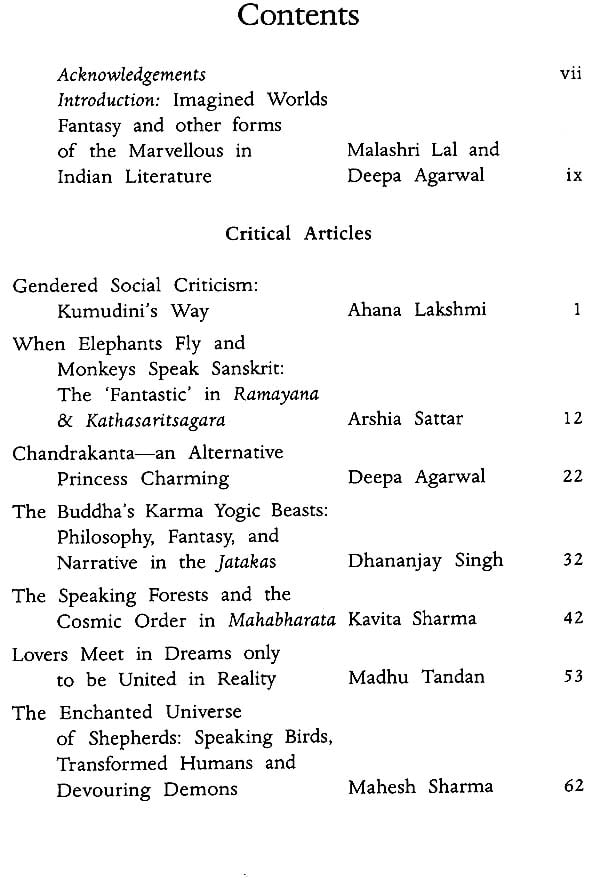
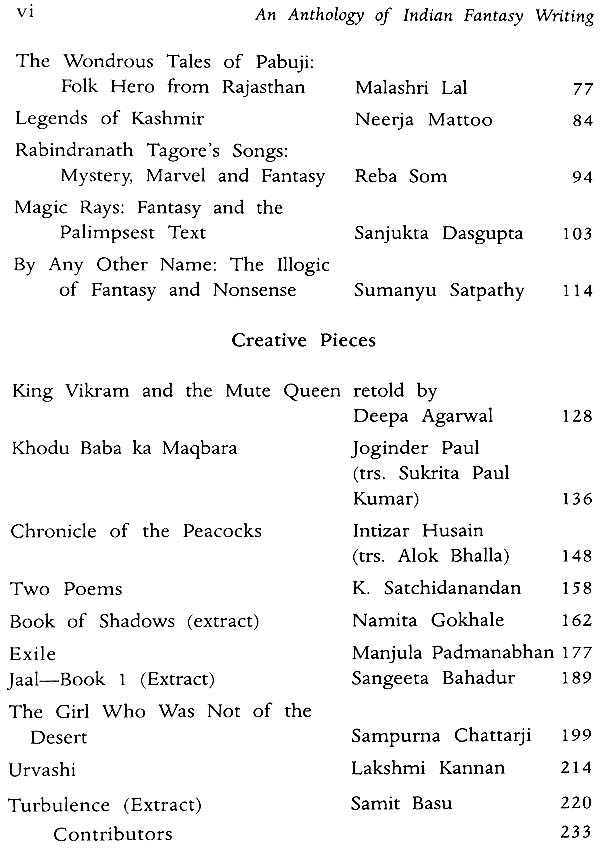
Sample Pages
